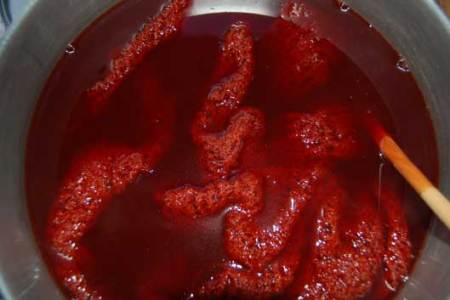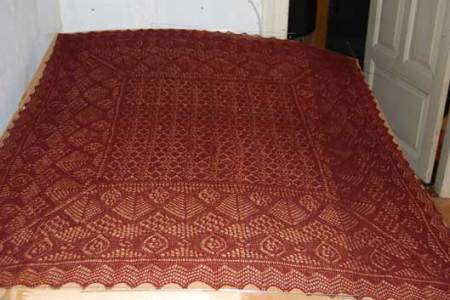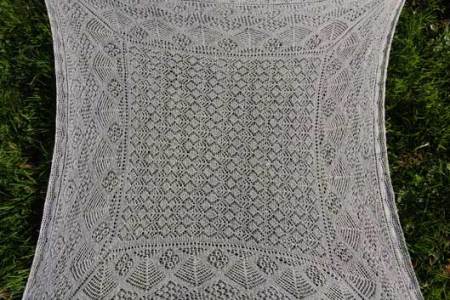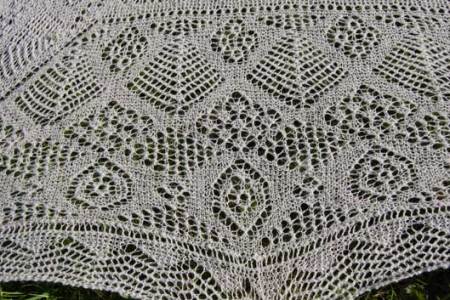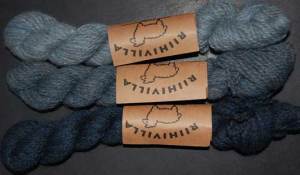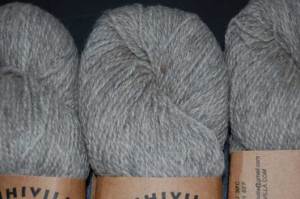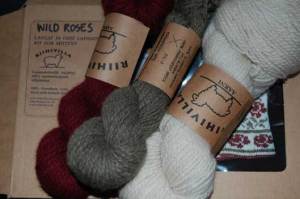Heute kam der Cameron-Schal nach dem Färben dann endlich ans Tageslicht. Und er ist genauso geworden, wie ich mir die Farbe gewünscht hatte: ein sattes dunkles Rot ohne Braunanteil und ohne ins Schwarze zu gehen *jubel*!
Das Photographieren wurde dann schon wieder ungleich schwieriger: hier bläst es ordentlich. Einen Schal mit einem Gewicht von 118 g hält da nix mehr, der ist wie ein Segel auf einem Boot. Ein paar Bilder haben wir mit vereinten Kräften trotzdem hinbekommen. Hund und Miezen waren glücklicherweise anderweitig beschäftigt ;-)
Today was the day for the Cameron shawl to see daylight for the first time. It turned out exactly the way I wanted: a rich dark red without brown and without too much black. I’m so happy with this result!
It was not that easy to get some pictures of the shawl, because we currently have a light storm here. A shawl weighing 118 grams (a little more than 4 oz.) doesn’t stay in place then. It behaves like a boat sail. Nevertheless DH and me managed to get some photo-shooting done. Fortunately the dog and the cats had other things to do ;-)
Hier versuche ich das „Segel“ in den Griff zu bekommen/Here I’m fighting with the „sail“ ;-)
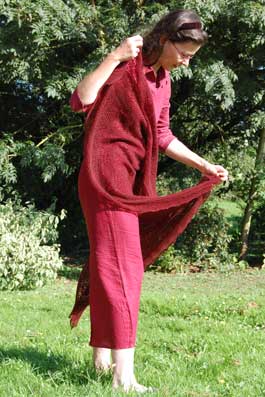 Der Schal auf der Wäscheleine mit unserem alten Hof im Hintergrund/The shawl on the clothes line. In the background is our old farm house:
Der Schal auf der Wäscheleine mit unserem alten Hof im Hintergrund/The shawl on the clothes line. In the background is our old farm house:
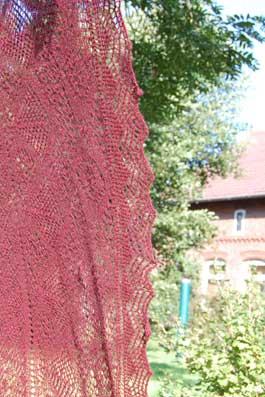 Das schönste Bild/My favourite photo:
Das schönste Bild/My favourite photo:
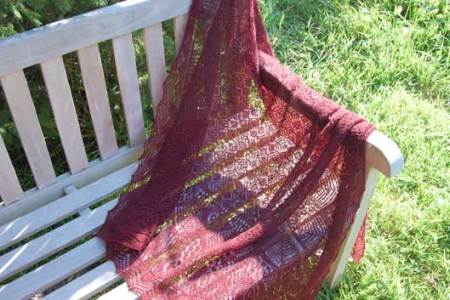 Hach, ich bin so erleichtert, so glücklich. Das hat soviel Spaß gemacht, von den ersten Versuchen im letzten Jahr mit dem ultrafeinen Garn zu stricken, über das Stricken der Muster bis hin zum Färben und Spannen und zum Photographieren heute. Ich glaube, ich habe noch nie soviel Zufriedenheit und Angst in einem Strickstück vereint…
Hach, ich bin so erleichtert, so glücklich. Das hat soviel Spaß gemacht, von den ersten Versuchen im letzten Jahr mit dem ultrafeinen Garn zu stricken, über das Stricken der Muster bis hin zum Färben und Spannen und zum Photographieren heute. Ich glaube, ich habe noch nie soviel Zufriedenheit und Angst in einem Strickstück vereint…
OMG, I do feel so relieved, so happy. Finally it turned out to be a lot of fun: starting with my first try in knitting this ultra-fine yarn last year. The knitting of the pattern was fun once I knew how to handle the yarn. Dyeing and blocking were fun. And finally the photo-shoot today… phew! Think I never had so much satisfaction and angst in one piece of knitting…
Wünsche Euch allen einen wunderbaren Tag mit vielen Strickereien!
Have a wonderful day with lots of knitting!




 Veröffentlicht von halfmaennchen
Veröffentlicht von halfmaennchen 